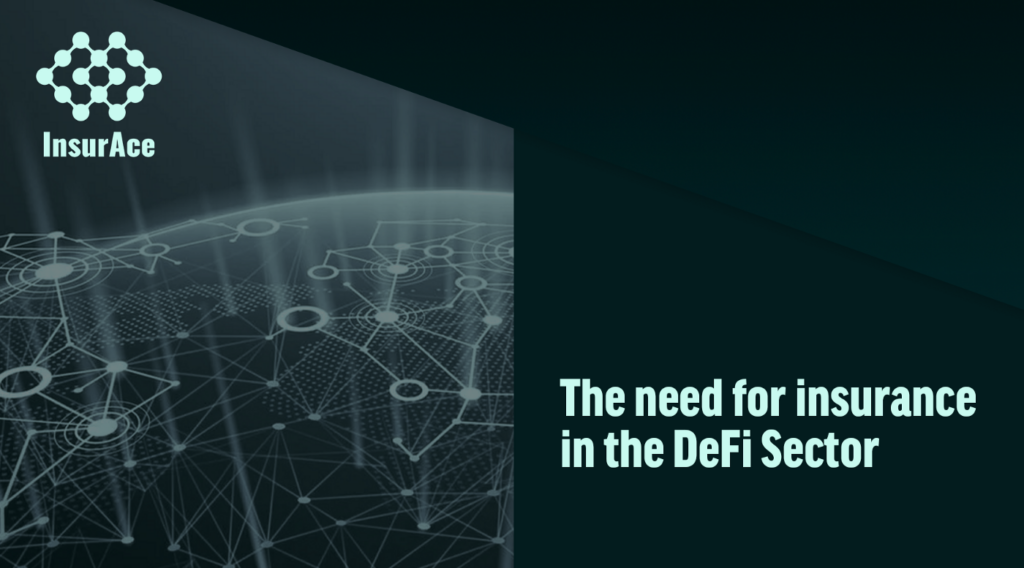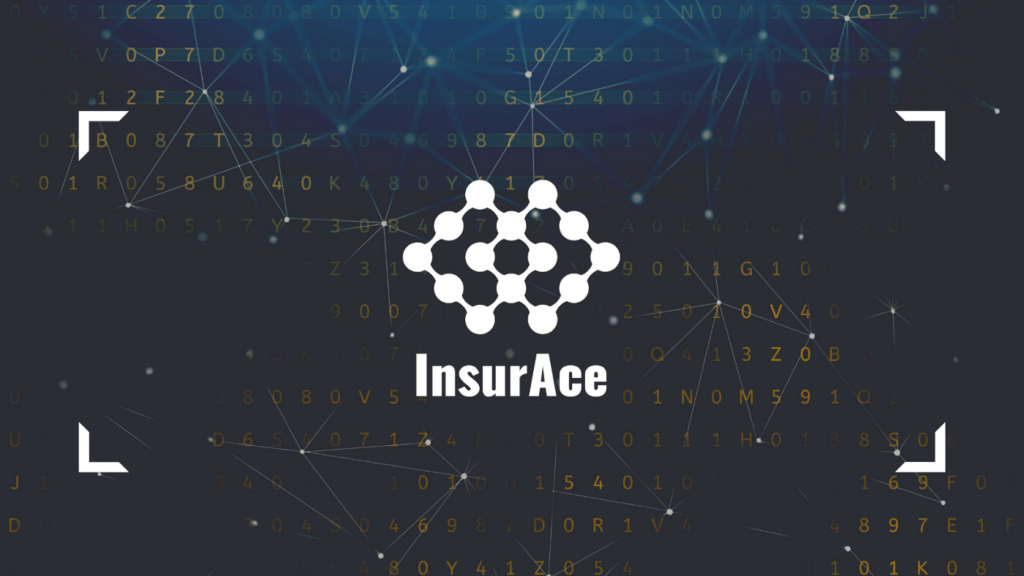The explosion of the DeFi industry
Over a short period, decentralised finance has successfully replicated the services offered by traditional finance while eliminating third parties. This idea has been executed through the creation of open-source, permissionless financial services on a decentralized network. DeFi protocols started out on the Ethereum blockchain being the most programmable one. However, due to the need to overcome high gas fees, we have seen an extension of this ecosystem into other blockchains.
In DeFi, smart contracts and decentralized apps (DApps) have been used to successfully automate the process. This is why the current pace of this ecosystem may not come as a surprise given that its use cases are almost infinite.
So far, the open finance market has recorded one of the most remarkable spikes since it began in July 2020. This might be owing to the fact that it offers numerous high yields when compared to traditional finance. Statistics from data aggregator, Defipulse, adds credence to this narrative.

A glance at the chart above reveals a tremendous increase in the Total Value Locked (TVL) within DeFi. The market enjoyed the rally that occurred recently which peaked at a high of about $90 billion; this spike was followed by a retracement. As of writing time, the TVL sits at near $55 billion, which is 82 times over what it was when the year began.
Navigating the risks within DeFi
No doubt, the DeFi industry has recorded decent progress within the crypto sphere. It has been accompanied by some inherent risks which have always been a key part of this nascent innovation.
Here are some of the common risks in the industry:
- Smart contract bugs are simply exploitation of any loophole in the protocol. Although some teams make an attempt to mitigate this by getting better devs to cover these weak links, this is still not so easy to achieve. Sometimes these development processes involve multiple rechecks and reruns across different operating systems.
These operations can be rigorous, take too long to build, and may not achieve the desired result. This is why auditing teams take up the task of checking for possible weaknesses. Nevertheless, all these efforts do not entirely eliminate the uncertainties there.
- Oracle failure is another notorious vector attack that has plagued the DeFi ecosystem since last year. Malicious malware could be sent to infect a smart contract by feeding it with wrong information, leading to an exploit. In other cases, unscrupulous persons use flash loans to buy or sell an asset and arbitrage the price difference. In most cases, this rips off the protocol of huge amounts of money.
- Liquidity crises are characterized by a situation where the liquid assets of a market begin to dry up as a result of locked tokens. In extreme cases, this could escalate and lead to panic in the market. Although the overcollateralized loan structure which dominates most DeFi platforms might make this less of a threat.
- Governance failure is another risk to consider. Although, there are arguments as to whether or not whales could decide to vote in their interest to hurt the community. The debates around possible scenarios like this reinforces the existing uncertainties, especially for the less tech-savvy populace.
Other arguments try to make a case that influential players in the centralised finance sector might sabotage DeFi’s growth. This assumption has been made on the premise that it has become a threat to traditional finance.
Meanwhile, one of the endearing parts of decentralized finance is the high yield potential it carries compared to traditional finance. These lofty rewards are not unconnected from the high level of uncertainty that characterizes the market. It is therefore not farfetched to say that the risks associated with the DeFi is directly correlated with the number of participants willing to deploy capital into this market.
The role of insurance in DeFi
Within the short time that the DeFi industry has existed, it has birthed smaller subsets that have made up its system. One of those subunits that has eventually turned out to become an integral part of its ecosystem is insurance.
The insurance industry in crypto is one of the budding sectors that has also tapped from the swift success of DeFi. Another on-chain analytics platform, DeFi Llama, indicates that this sector currently makes up just 0.16% of the entire open finance market. With a cumulative TVL of about $89 million, this segment appears to be making its mark already. A small market share like this indicates undersaturation and plenty of growth potential as the industry evolves.

Insurance gives investors confidence, thereby increasing their risk appetite and willingness to participate more in any market condition.
The challenges of insurance in DeFi
However lucrative it might seem to participate in DeFi, its growth has been plagued with many constraints. These limitations have held back blockchain-based finance significantly for various reasons. In this article, we would highlight some of those reasons.
Deficient product accessibility
Limited access to DeFi insurance products can cause an overall setback in the general advancement of the space. Here are some of the accessibility issues:
- Passing through KYC procedure to be able to enjoy the benefits of DeFi insurance. This becomes an issue because it contradicts the fundamental value of a free, open, and decentralized platform. Having this reintroduces one of the major drawbacks of inclusiveness which is dominant in traditional finance.
- We also have the issue of limited cover capacity which reduces the number of customers that can gain access to insurance services for their protocols. Similarly, lack of coverage for new protocols can be another issue. Prospective clients that would like to secure insurance for their proposed protocols will be unable to do so as well.
- The absence of cross-chain coverage is another major inhibition within DeFi. The problem of gas fees initially necessitated the creation of more programmable blockchains outside Ethereum. Over time, this has caused us to see other blockchains taking some of the workloads. This has in turn made it important to integrate cross-chain functions to achieve interoperability seamlessly.
Risk management
The ability to properly manage risk is the backbone of any insurance platform. Given the nascent nature of this market, the capacity to ascertain risks and manage them could be an issue. Some of these issues have been highlighted below:
- How to adequately price risk due to the complexities that accompany the DeFi ecosystem makes it difficult to accurately quantify the risks. In addition, any attempt at pricing DeFi related risks would require certain rare skill sets. At any rate, it would be a combination of technical inclination and underwriters training which may not be so easy to come by. In the end, these still wouldn’t guarantee that all the hidden and grey areas will still be adequately accounted for.
- Claiming assessments need to be properly evaluated, this makes it necessary to go beyond the existing Yes/No command structure in the codes. Losses need to be adequately measured as well in order to come up with a more accurate appraisal to work with.
So what is InsurAce?
InsurAce is a leading decentralized insurance protocol that aims to cover existing weak points in DeFi insurance. Investors can rely on this reliable and safe platform to participate in open finance and worry less about risk exposure.
By leveraging on the cross-chain integration, users can enjoy the flexibility that would cover them across multiple blockchains. Being the foremost platform to offer this has provided InsurAce with a first movers advantage necessary to explore more options.
In addition, the cross-chain portfolio-based insurance structure allows investors to access an unbeatable low premium. InsurAce also creates an investment platform where investors can earn rewards through mining programs.
Closing notes
The crypto industry might still have a lot of ground to cover, making it even more pertinent to have a shield. InsurAce creates the right atmosphere for users to participate more freely, fully knowing that their risks have been mitigated. This structure further reduces the entire cost of getting insured, thereby making it a no-brainer.
About InsurAce.io
InsurAce Protocol is a DeFi Insurance protocol that has quickly become the second-largest protocol in DeFi insurance. At the time of writing, the protocol has a $20 million market cap based on a circulating supply of 11 million INSUR tokens. There is a maximum release of 100 million INSUR Tokens which can be mined through staking on the protocol.
InsurAce.io is a decentralized insurance protocol, to empower the risk protection infrastructure for the DeFi community. InsurAce offers portfolio-based insurance products with optimized pricing models to substantially lower the cost; launches insurance investment functions with SCR mining programs to create sustainable returns for the participants, and provide coverage for cross-chain DeFi projects to benefit the whole ecosystem.
InsurAce.io is backed by DeFiance Capital, Parafi Capital, Alameda Research, Hashkey group, Huobi DeFiLabs, Hashed, IOSG, Signum Capital and a dozen of other top funds. In the three months since its first testnest was released, several high profile partnerships have been established. Information to be released in separate releases.
The project lead for InsurAce.io is Oliver Xie. Oliver started to work on InsurAce.io project since September 2020, and prior to that, he entered the crypto space back in 2017 where he led a team to research crypto derivatives and blockchain technology and has gravitated towards blockchain-based Open Finance for the past few years. He identified an opportunity for a unique approach to providing insurance for DeFi smart contracts and users, and InsurAce.io was created.
For press enquiries and assets please contact: dan@insurace.io
Join our community:
Email: contact@insurace.io
Telegram: https://t.me/insurace_protocol
Discord: https://discord.com/invite/vCZMjuH69F
Twitter: https://twitter.com/insur_ace
Forum: http://forum.insurace.io


